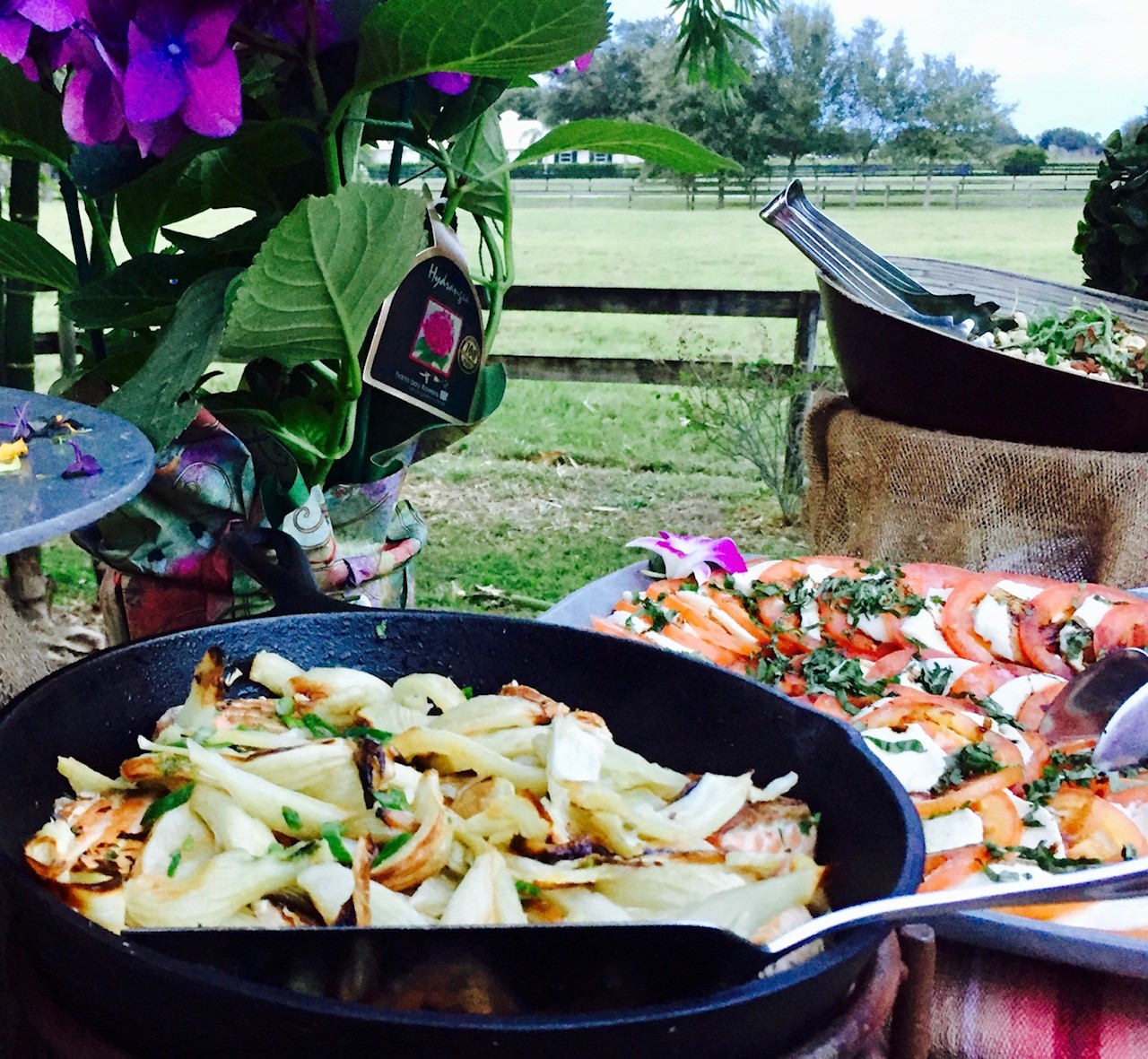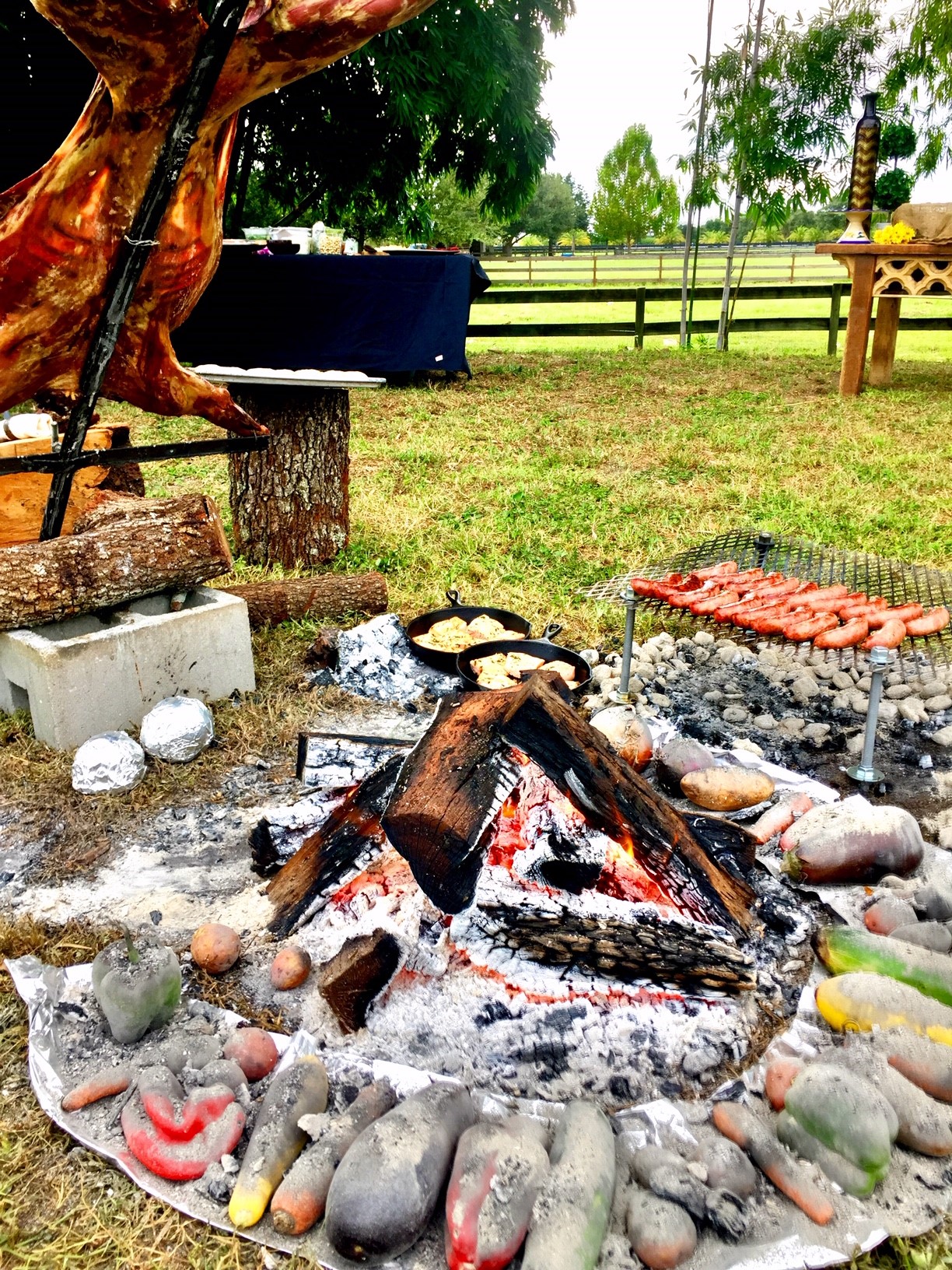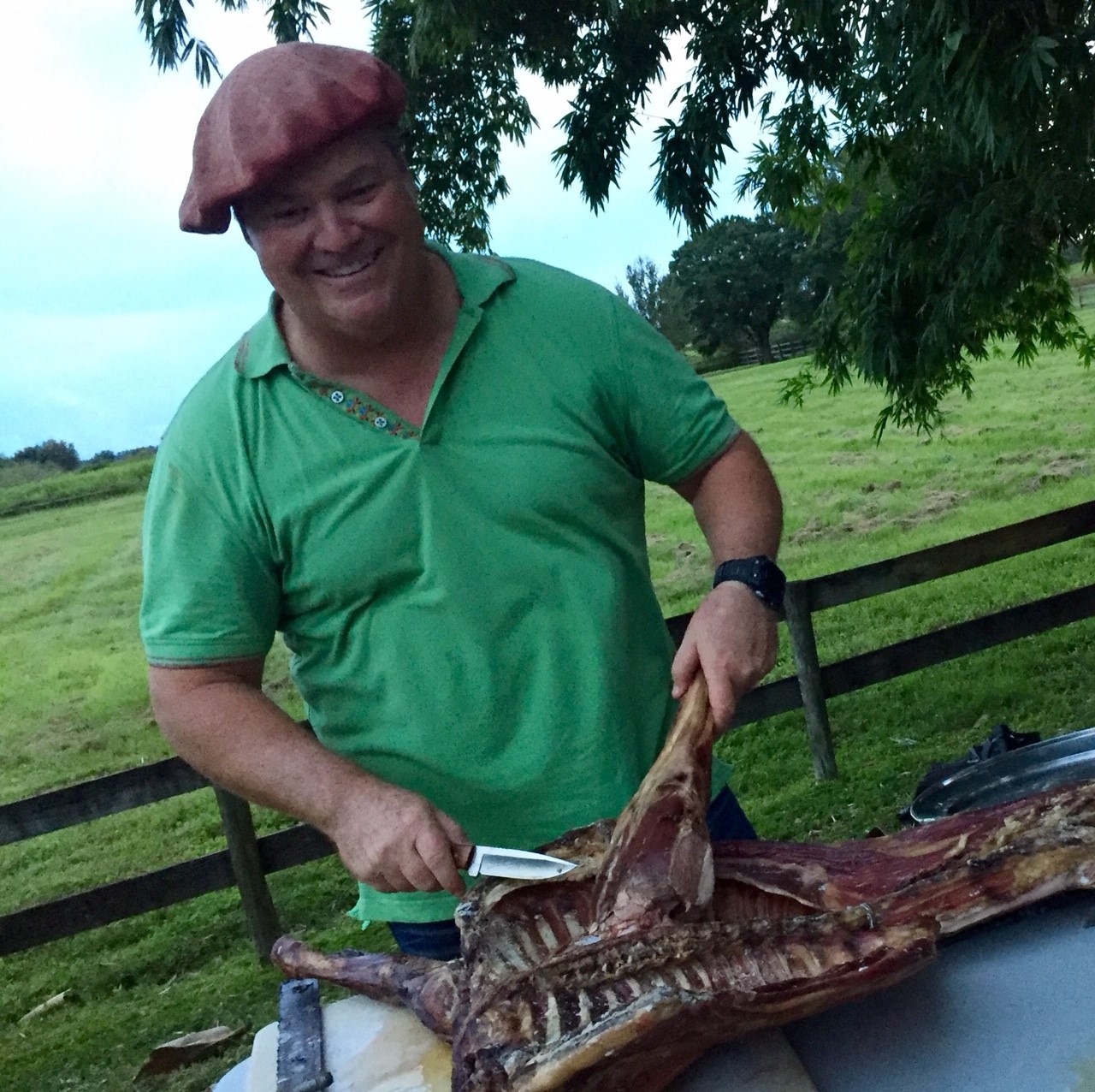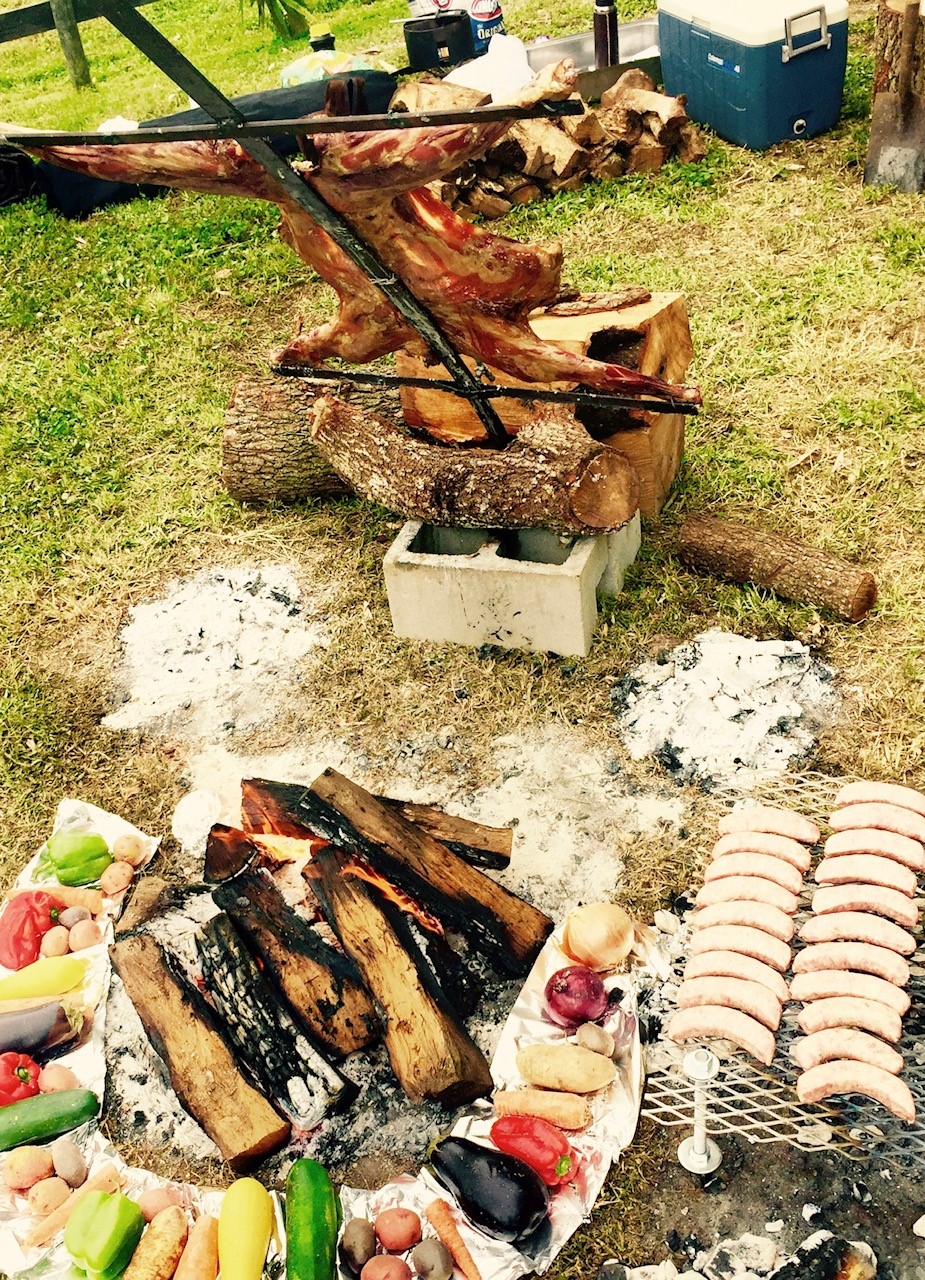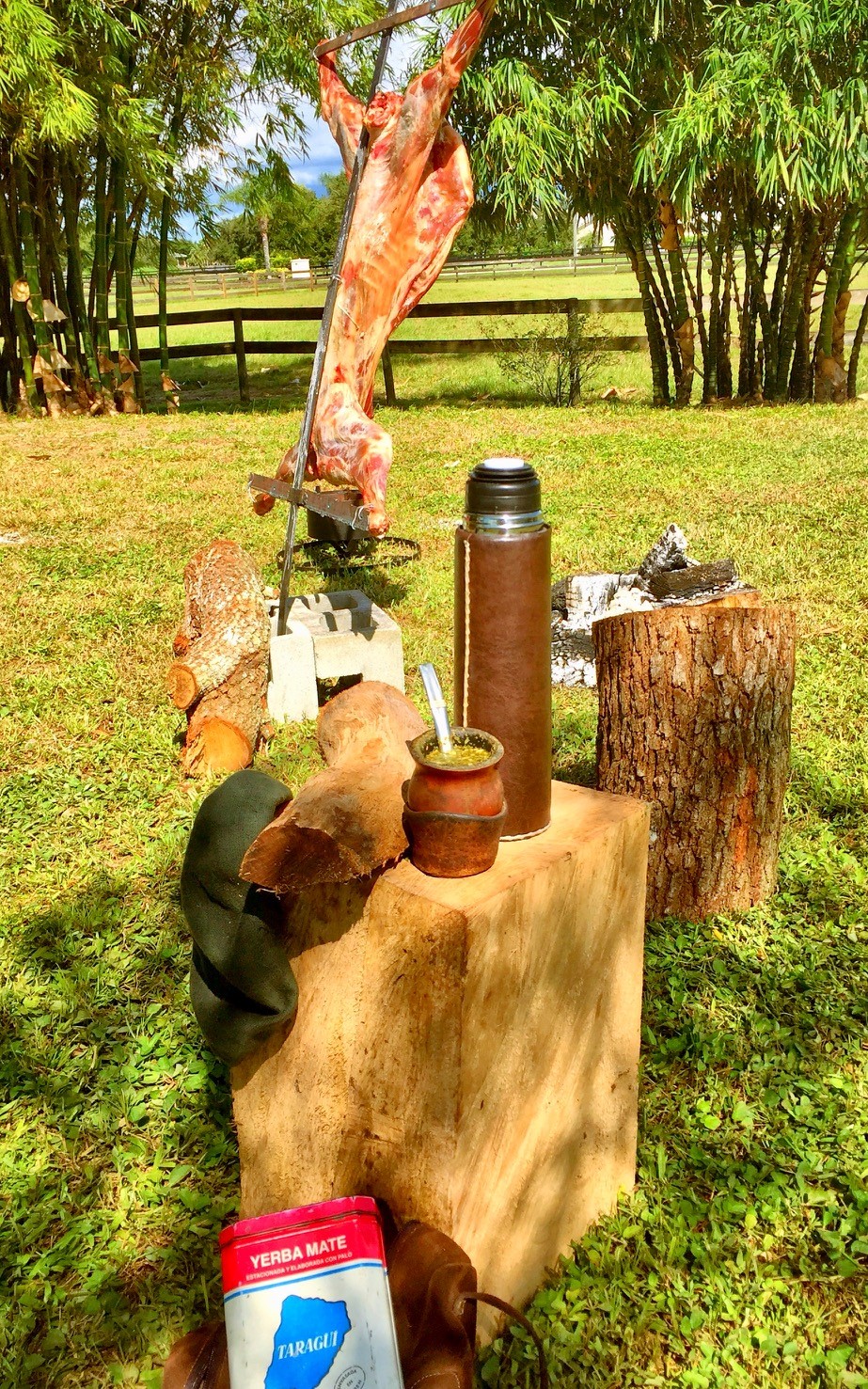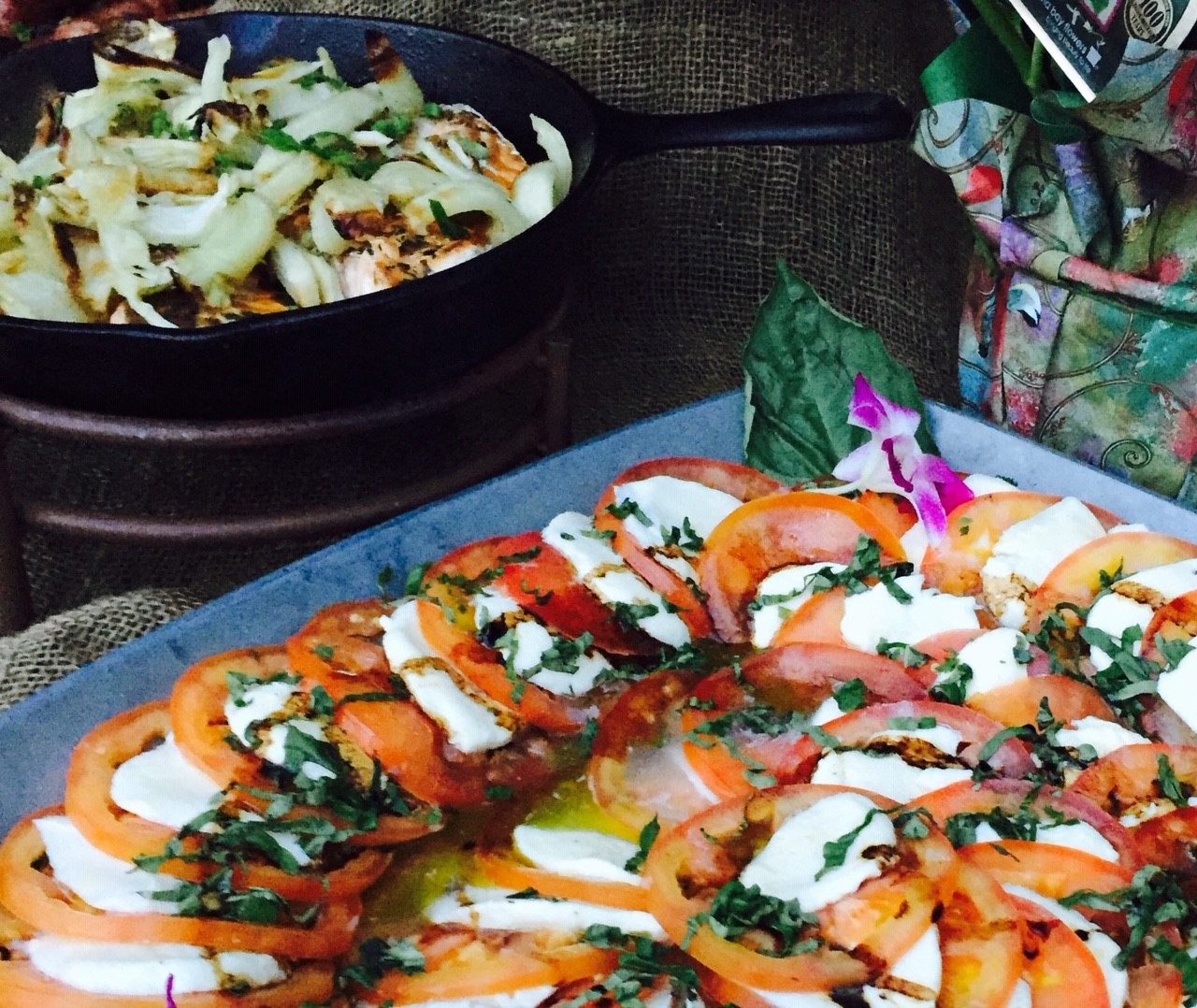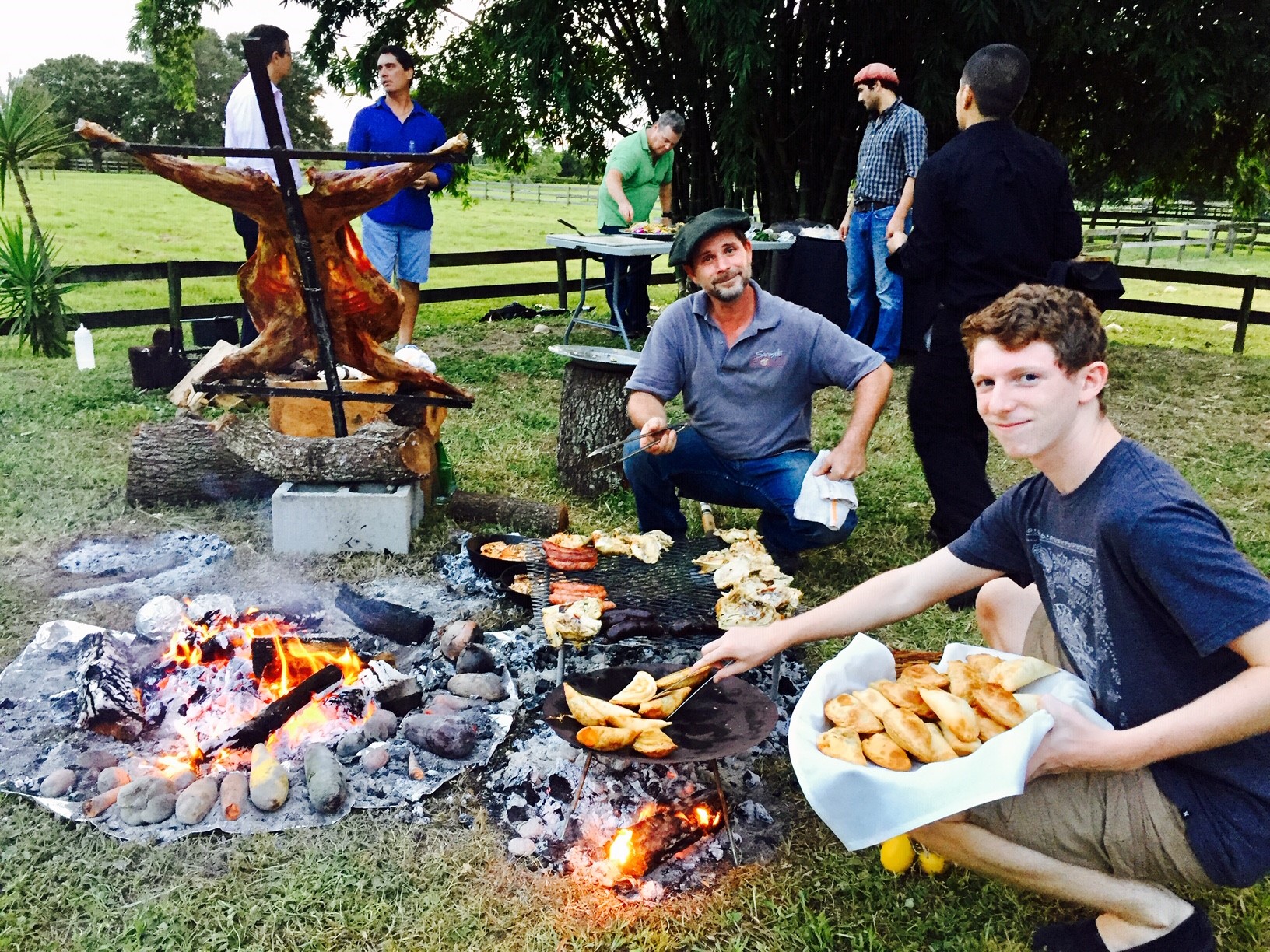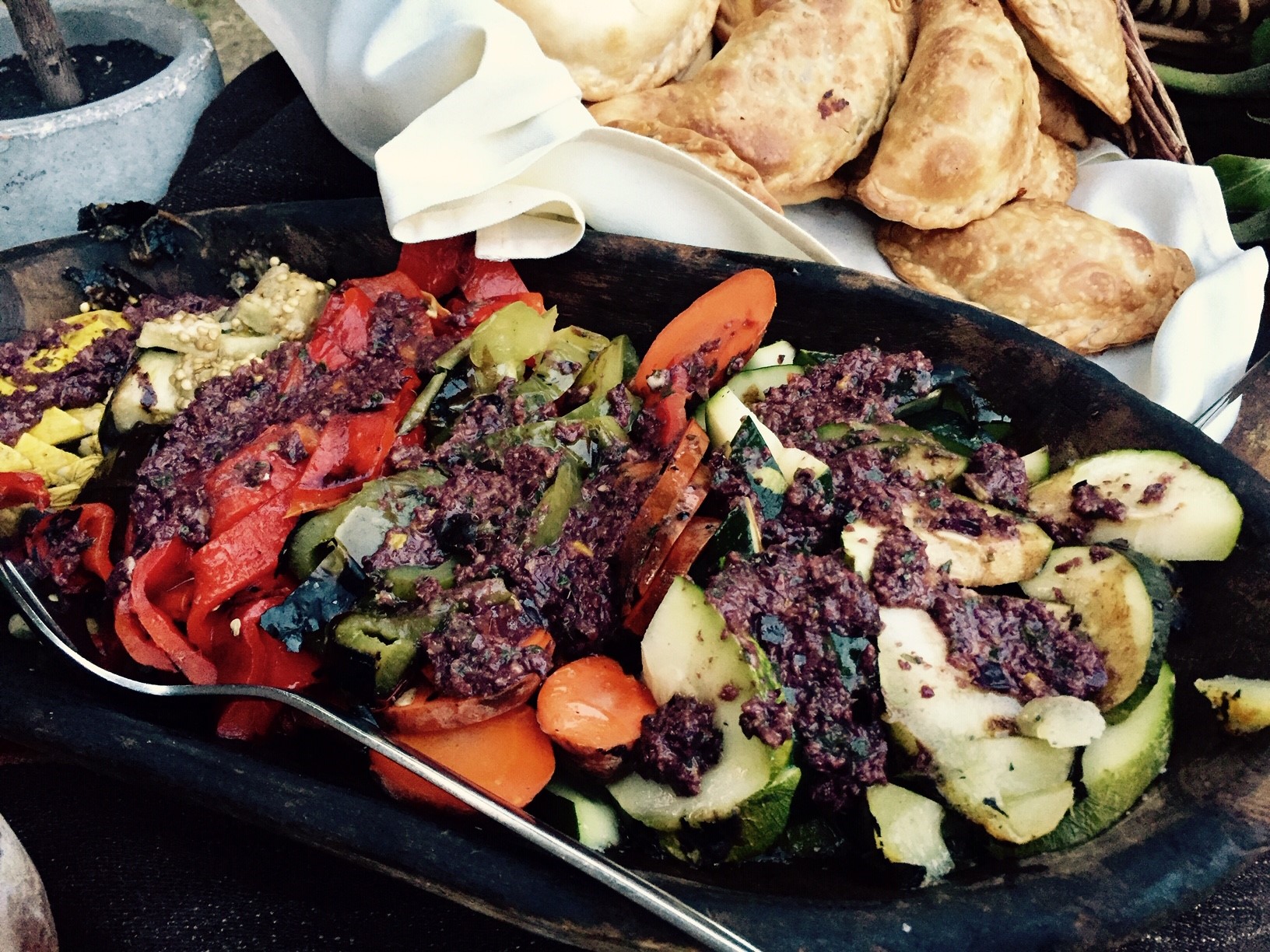By Tommy Klauber
Cooking with wood on a fire is like a first date, it is something you look forward to with great anticipation and a little anxiety. You can never know what the conditions will be: the day can be windy; the wood may be seasoned or green. In a way every time you cook over wood outdoors you are starting in a fresh strange kitchen. Once you have done it enough you will always be able to adapt.
Argentina is a country known for many things including Polo, the Tango, and Evita. In the culinary world, phenomenal beef is their main contribution. Asado is essentially a South American cookout. Served to small and large groups, this style of grilling vast quantities of meat over an open flame is based on the traditions of the gauchos, or cattle herders, who once roamed the grasslands of Central Argentina.
But asado is more than a meal. My friend and asado guru Manuel Lossa says, "Asado not only refers to the meat . . . it is also the company." The asado is all about patience and enjoying your life, nature, family and friends Manuel says.
A fire is started and wood is burned down to coals, which are then used to slow-cook the meat, infusing a smoky flavor. The asado is the center of all social gatherings. Comparing the asado to a typical barbeque isn´t fair and any Argentine would cry foul to this claim. Things like propane gas or even charcoal are sacrilegious to the authentic asado, which uses only a wood burning fire. The asado isn´t Spanish for barbecue or grill, it´s more of an event, an art form, and a ritual steeped in generations of family tradition. Grilling was typically a man’s territory and veteran asadores could debate the benefits of their techniques for hours. Fancy recipes are not common, just a sprinkle of salt is needed, as the quality of the meat is the showcase. Beef ribs, steak, lamb, chorizo, and blood sausage are typical and are served with chimichurri sauce, a mixture of olive oil, garlic, parsley, oregano, and vinegar.
This communal nature is woven throughout the culture. For example, mate, a bitter green tea, is consumed with friends - never alone. In a receptacle resembling a gourd, one member of the group places a metal straw and a handful of mate leaves. That person pours boiling hot water over the leaves and consumes the first brew. The steeping process is repeated, and the mate is passed to the next person. Each person takes turns drinking from the same vessel. Like the word mate, which refers to both the utensil and the beverage, the term asado applies to the event and the meat. The cuts of meat here are larger and have more surface fat. Individual steaks are far less common. The slow cooking process of asado melts the fat cap of less expensive pieces, giving way to tenderness and flavor. The asador (grill masters) technique is key; various components are placed on the parrilla, or grill, according to cooking time and order of consumption. Chorizo, the lightly seasoned pork sausage, and morcilla, a blood sausage, go on the grill first, and consequently are consumed first. Meats follow, and large cuts, often the showpiece, are the finale. The asador will slice and offer up each piece immediately after removing it from the parrilla. In this way, the meal is served in rounds. Accompaniments are straightforward, designed not to overwhelm the meat, nor take away from socializing. Always use hardwood; I am partial to oak because it makes great coals. Maple is also good, as are Birch and Hickory. The smoke of fruit wood adds a whiff of flavoring. Fire is used as a source of coals, which you then take your shovel or rake under and around your cooking grate. Just as you can control the temperature in your oven you can control the amount of heat that you use in wood fire cookery. By moving the coals closer or farther from the food you can adjust the temperature.
Almost any food can be made delicious when cooked over fire. Each food has a particular stage of fire at which it cooks best. Listen to your ingredients—they will be your best guide—and keep your fire going all through the meal, including dessert.
Asado Menu
Empanadas Los Naranjos
Rescolodo Vegetables with Orange Basil Tapenade (Vegetables roasted in the coals)
Fresh Figs with Mozzarella, Thyme and EVOO
Grapefruit Salad with Arugula and Toasted Hazelnuts
Salmon with Charred Fennel and Aioli
Lamb al Asador and Chimichurri
Chorizo on Parrilla
Split Chicken with Lemon Garlic and Parsley
Dulce de Leche Flan with Dakin Dairy Unsweetened Whipped Cream
Chimichurri Sauce:
1 cup lightly packed chopped parsley (ideally, flat leaf "Italian" parsley)
3 to 5 cloves garlic, minced
1 teaspoon salt
1/2 teaspoon freshly ground pepper
1/2 teaspoon chili pepper flakes
2 tablespoons fresh oregano leaves (optional)
2 tablespoons shallot or onion, minced
3/4 cup vegetable or olive oil
3 tablespoons sherry wine vinegar, or red wine vinegar
3 tablespoons lemon juice
Place all chimichurri sauce ingredients in a blender or food processor and pulse until well chopped, but not pureed.
Orange Basil Tapenade
Ingredients:
2 cups green olives, pitted without pimentos
2 tsp orange zest
2 tbsp. extra virgin olive oil
1 tbsp. fresh-squeezed orange juice
1 tbsp. chopped fresh marjoram, plus a few unchopped leaves for garnish
Instructions:
Put olives and orange zest in the bowl of a food processor and pulse 10 times. Get your olive oil ready. Turn on the motor and pour the oil through the spout. Once the oil is added, turn off your motor. Check the texture. It should be grainy without any large chunks. If you have chunks, scrape down the sides and pulse a couple more times until consistently grainy. Refrigerate until you are ready to serve. (If you are serving immediately, proceed to the next step.) At service, stir in orange juice and chopped marjoram. Sprinkle 3-5 whole marjoram leaves on top for edible garnish



